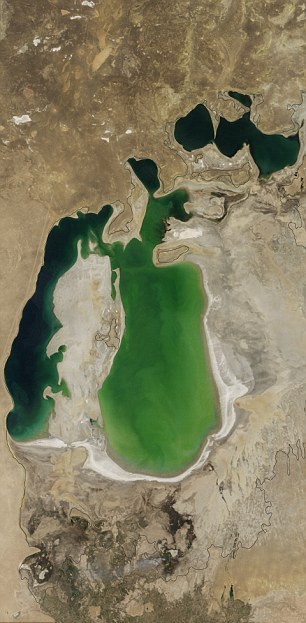NASA image shows part of Aral Sea completely disappear for first time in centuries
American space agency NASA has published a satellite imagine of the Aral Sea made on 19 August 2014. The photo shows that the worst has happened: the eastern basin of the Southern Sea has completely turned into a desert.
.jpeg)
"This is the first time the eastern basin has completely dried in modern times," said Philip Micklin, a geographer emeritus from Western Michigan University and an Aral Sea expert, according to NASA.
"And it is likely the first time it has completely dried in 600 years, since Medieval desiccation associated with diversion of Amu Darya to the Caspian Sea," he added.
The agency's report shows a photograph taken in August 25, 2000, where the eastern part of the sea is still relatively abounding. In black is outlined the level of the sea back in the 1960s, prior to when the waters of the Amu Darya and Syr Darya rivers started to be intensively used for irrigation.

The difference across the years is staggering.
Below is a comparison of space images made by NASA in the period between 2000 and 2014:
.gif)
The Aral Sea was once the fourth largest lake in the world. Its drying out began in the 1960s, after the Soviet Union decided to divert water from the Amu Darya and Syr Darya rivers to irrigate fields in Kazakhstan, Uzbekistan and Turkmenistan.
This proved to be successful in the fields - the desert started blooming - but the damage to the lake was irreparable.
The water level declined and Northern (Small) Aral Sea became separated from the Southern (Large) Aral Sea. Over time, the Southern Sea became divided into eastern and western parts. In 2005, a dam was built to separate the northern and southern parts, so as to preserve at least the smaller northern part. The southern part was judged to be beyond rescue.
Desertification of the once flourishing area resulted in the weather becoming harsher: winters become colder, summers became hotter and dryer.
The bottom of the sea now exposed is not only salty but also contaminated with agricultural chemicals that pose a threat to the health of the locals.


 +7 (777) 001 44 99
+7 (777) 001 44 99




 Қазақша
Қазақша Русский
Русский English
English







































